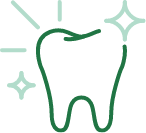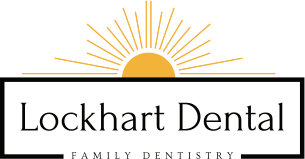Restorative Dentist in Columbia, SC for the Whole Family
Trust Our Restorative Dentist in Columbia, SC for a Brighter, Confident, and Healthy Smile.
Reviving Your Smile, Restoring Your Confidence!
Several factors can have a negative impact on the health of your teeth. While it is preferable to keep your natural teeth throughout your life, there are options for restoring your smile following tooth loss or damage.
At Lockhart Dental, our restorative dentistry services offer patients a range of options for restoring their teeth. Our experienced dental team is dedicated to providing high-quality restorative dentistry services to help improve the health and appearance of your teeth. We use the latest technology and techniques to ensure your treatment is comfortable, effective, and long-lasting.
Contact us today to learn more about our restorative dentistry services and to schedule your appointment.
Conscious Sedation
For patients who experience anxiety or fear during dental procedures, we offer conscious sedation. This safe and effective technique involves using medication to help you feel relaxed and comfortable during your appointment.

Crowns
When a tooth is damaged or decayed, a dental crown can restore its function and appearance. Our crowns are made from high-quality materials and custom-fit to your teeth for optimal comfort and durability.

Bridges
If you’re missing one or more teeth, a dental bridge can fill the gap and prevent other teeth from shifting out of place. Our bridges are designed to blend in seamlessly with your natural teeth and provide a comfortable, functional solution.

Fillings
We offer a range of filling materials, including composite and amalgam, to repair cavities and restore the strength and function of your teeth.

TMJ & Occlusal Analysis
Temporomandibular joint (TMJ) disorders can cause pain and discomfort in your jaw and face. We provide thorough TMJ and occlusal analysis to diagnose and treat these conditions and improve your overall oral health.

Dentures
If you’re missing multiple teeth, dentures can restore your ability to eat, speak, and smile with confidence. We offer full and partial dentures that are custom-made to fit comfortably and look natural.

Extractions
In some cases, a tooth may need to be removed to prevent further damage or infection. Our team is experienced in performing extractions safely and comfortably.

Dental Implant Restoration
Dental implants are a popular and effective solution for replacing missing teeth. We offer implant restoration services to restore your smile and improve your oral health.

Inlays & Onlays
Inlays and onlays are a type of dental restoration used to repair moderately damaged or decayed teeth. Our Inlays and onlays are custom-made to fit precisely into the cavity or damaged area of your tooth, preserving as much natural tooth structure as possible.
Our Process
Step 1: Consultation
Our dentist will assess whether you are a good candidate for dental crowns. If you are found suitable, an impression of your tooth will be sent to the lab to create an exact model for your crown.
Step 2: Preparation of Teeth
Before we begin reshaping the tooth that will receive the crown, we will anesthetize the tooth and gum tissue. If the tooth damage was severe, we will clean your enamel and remove any decay.
Step 3: Professional Restorative Dentistry
Depending on your condition, we create a personalized treatment plan to give you the best possible dental care with great results.
Step 4: Post-Care
Following the placement of dental crowns, you should maintain good dental hygiene practices such as brushing and flossing.
Your Trusted Restorative Dentist in Columbia, SC
Experience
Our team of dental professionals has years of experience providing a wide range of restorative treatments. We stay up-to-date with the latest techniques and technology to ensure that our patients receive the best possible care.
Quality Care & Commitment
Our team of dental professionals has years of experience providing a wide range of restorative treatments. We stay up-to-date with the latest techniques and technology to ensure that our patients receive the best possible care.
Personalized Restorative Dental Services
Every patient is unique, which is why we take the time to understand your individual needs and goals. We work with you to develop a personalized treatment plan that meets your specific needs and fits within your budget.
Restorative Dentist Near Me: Columbia, SC
If you are looking for a restorative dentist in Columbia, SC, contact Lockhart Dental today to schedule your appointment and take the first step towards restoring your smile. Feel free to get in touch.
